You can create a natural defense system by planting marigolds to attract ladybugs and hover flies, sweet alyssum for lacewings, yarrow for beneficial parasitic wasps, dill for efficient pest controllers, and nasturtiums as living traps for garden heroes. These strategic plantings transform your garden into a fortress where beneficial insects feast on aphids and harmful pests while providing beautiful borders and ground cover. Discover how proper timing and placement maximize their protective power.
Marigolds: The Ultimate Aphid Assassin Magnets
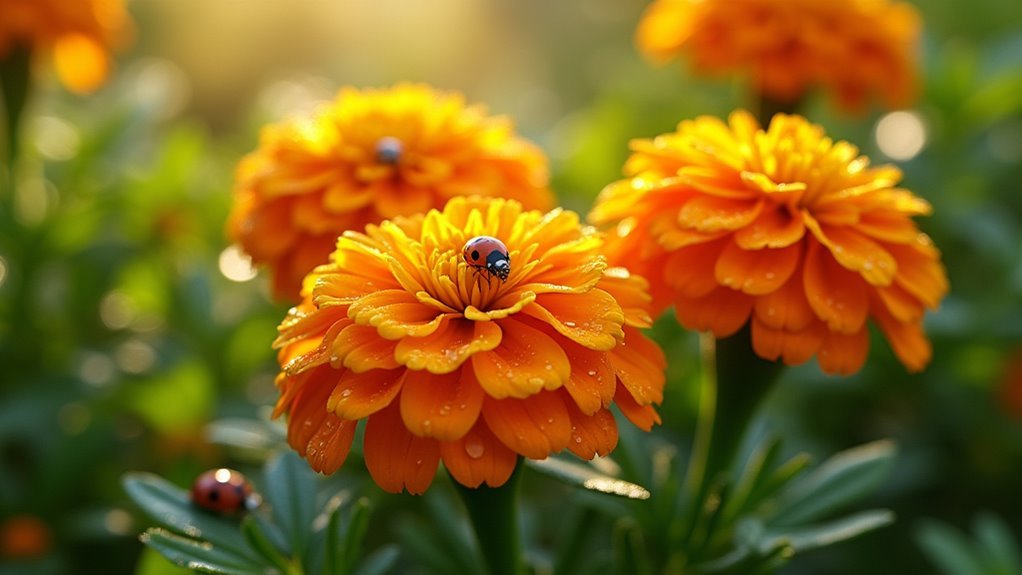
When aphids threaten to destroy your garden, marigolds act as your secret weapon by attracting nature’s most effective pest controllers.
These vibrant plants don’t just repel harmful pests—they actively lure beneficial insects like ladybugs and hover flies that feast on aphids and thrips. Growing marigolds alongside your vegetables creates a natural pest management system that works around the clock.
The strong scent deters destructive insects while simultaneously drawing in garden defenders.
Plant marigolds 3-4 weeks before transplanting other crops to guarantee they’re blooming when pests become most active. This strategic timing helps protect your garden when it’s most vulnerable.
Beyond their pest-fighting abilities, marigolds provide colorful borders that enhance your garden’s visual appeal while serving as living guardians against harmful invaders.
Sweet Alyssum: Tiny Flowers That Pack a Predatory Punch
While sweet alyssum’s delicate blooms might appear decorative, these tiny powerhouses transform your garden into a predator sanctuary that devastates pest populations.
This hardy annual requires little care while delivering maximum pest control benefits. Plant sweet alyssum in full sun to partial shade, where its fragrant white, pink, or purple blooms attract beneficial insects like ladybugs and lacewings that deter pests such as aphids.
Sweet alyssum’s dense growth creates a protective barrier that doubles as living mulch to suppress weeds and retain moisture.
Use this versatile plant in borders, containers, or as ground cover for both beauty and function. Regular deadheading guarantees continuous flowering throughout the season.
Follow this guide to growing sweet alyssum for an effective, low-maintenance pest management solution.
Yarrow: The Beneficial Wasp’s Best Friend
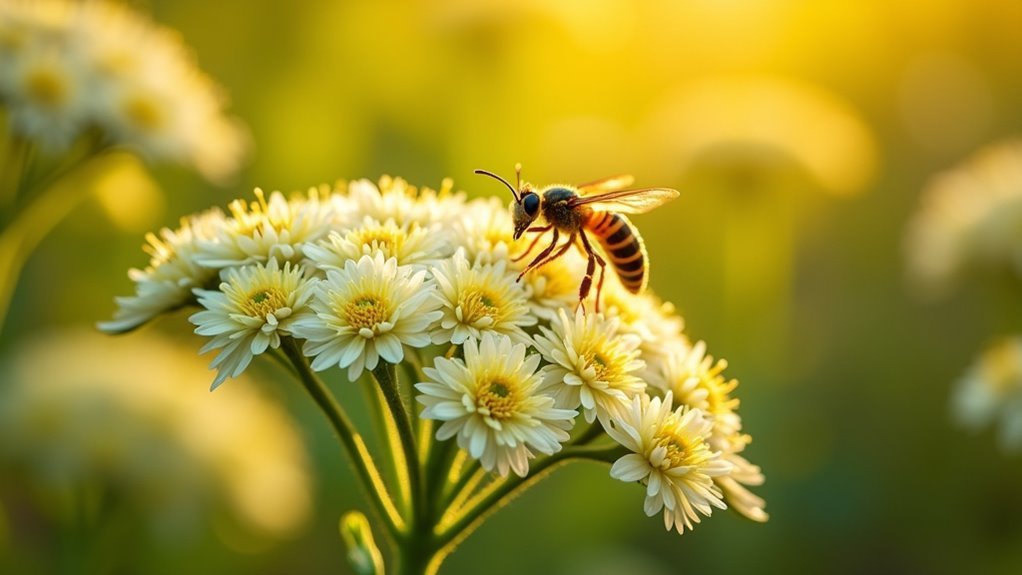
Yarrow’s flat-topped flower clusters serve as landing pads for beneficial parasitic wasps that’ll transform your garden into a pest-control powerhouse. These natural defenders seek out caterpillars and harmful insects while feeding on yarrow’s nectar-rich blooms. The flowers are irresistible to wasps from late spring through early fall, creating sustained protection for your garden ecosystem.
You’ll appreciate yarrow’s minimal growing requirements. This drought resistant perennial thrives in well-drained soil and reaches three feet tall with little maintenance. Its strong scents help keep pests away while attracting beneficial insects.
The deep root system improves soil health and water retention, supporting overall garden resilience. Beyond pest control, yarrow offers medicinal benefits, historically treating wounds and inflammation, making it invaluable for sustainable gardening.
Dill: Attracting Nature’s Most Efficient Pest Controllers
Dill’s delicate umbrella-shaped flowers attract some of the garden’s most voracious pest hunters, including ladybugs and lacewings that can devour hundreds of aphids daily.
You’ll find this aromatic herb confuses pest insects with its scent, making it harder for them to locate host plants and providing excellent pest protection for your garden.
As a companion plant, dill enhances nearby vegetables like cabbage and broccoli while supporting vital pollinators including bees and butterflies.
These beneficial insects rely on dill’s nectar and pollen, promoting overall garden health throughout your growing season.
You can easily grow dill in full sun with well-drained soil conditions.
Its versatility makes it perfect for any garden space, whether you’re growing vegetables or creating dedicated pollinator zones.
Nasturtiums: Living Traps That Draw Garden Heroes
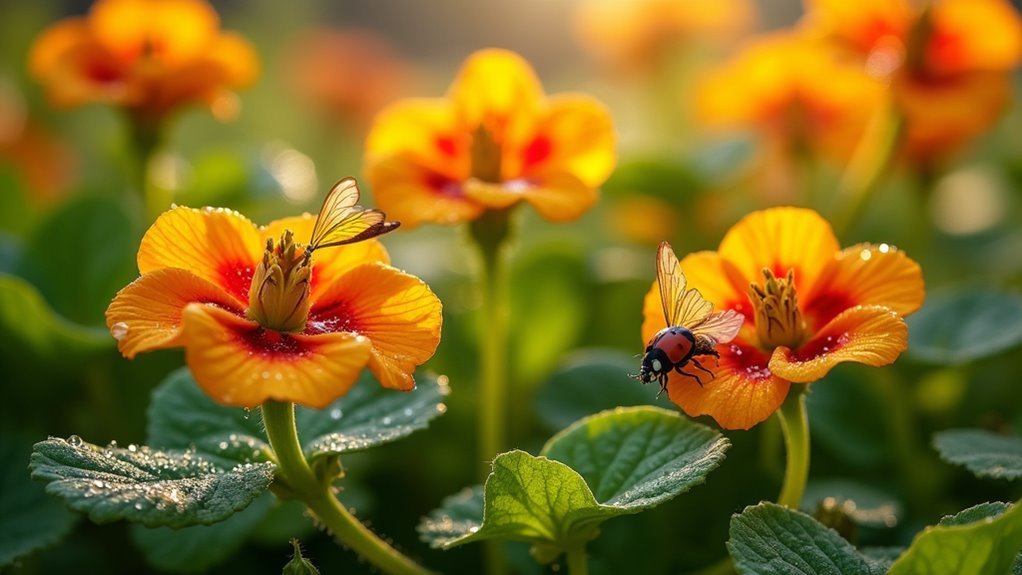
Since nasturtiums act as sacrificial plants, they cleverly lure aphids and cucumber beetles away from your prized vegetables while simultaneously attracting beneficial predators like hoverflies and ground beetles.
These versatile trap crops thrive in poor soil conditions where other plants struggle, making them perfect additions to challenging garden beds. You’ll appreciate how nasturtiums attract a variety of beneficial insects while protecting plants through natural pest management.
Their peppery scent confuses unwanted pests, disrupting their ability to locate target crops. By strategically positioning nasturtiums near vulnerable vegetables like cabbage and broccoli, you’ll effectively reduce pest populations without relying on chemical pesticides.
Nasturtiums’ natural peppery scent acts as a botanical smokescreen, confusing pests and protecting nearby vegetables without harmful chemicals.
Plus, their edible flowers and leaves provide culinary benefits, creating a multifunctional garden element that enhances both beauty and biodiversity.
Frequently Asked Questions
How Do I Attract Predators to My Garden?
You’ll attract beneficial predators by planting yarrow, dill, sweet alyssum, and marigolds. These flowers lure ladybugs, parasitic wasps, and hover flies that’ll hunt harmful pests. Add aromatic herbs and maintain diverse blooms throughout the growing season.
What Are the Best Plants to Keep Animals Away From Garden?
You’ll want thorny shrubs like barberry and holly, strongly scented herbs such as rosemary and lavender, plus spiky plants like cacti and agave that’ll effectively deter animals from entering your garden.
What Flower Do You Plant in Garden to Keep Bugs Away?
You’ll want to plant French marigolds, which repel whiteflies and aphids effectively. Nasturtiums work as trap crops for aphids, while English lavender’s strong scent deters mosquitoes, flies, and moths naturally.
What Plants Are Best for a Wild Garden?
You’ll want native plants like coneflowers and black-eyed Susans for your wild garden. Add aromatic herbs like lavender and mint, plus yarrow and sweet alyssum to create diverse combinations that support local ecosystems.
In Summary
You’ll transform your garden into a natural battlefield by planting these five defender-attracting champions. Marigolds, sweet alyssum, yarrow, dill, and nasturtiums won’t just beautify your space—they’ll recruit an army of beneficial insects to fight your pest battles. You’re creating a self-sustaining ecosystem where nature does the hard work. Plant these strategic allies, and you’ll watch your garden become a fortress protected by its own living security system.

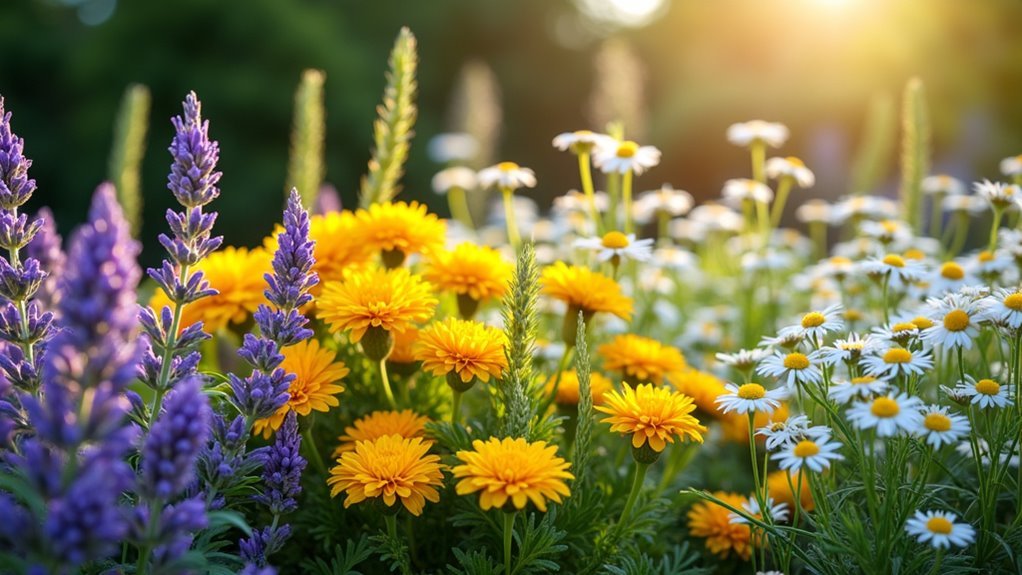
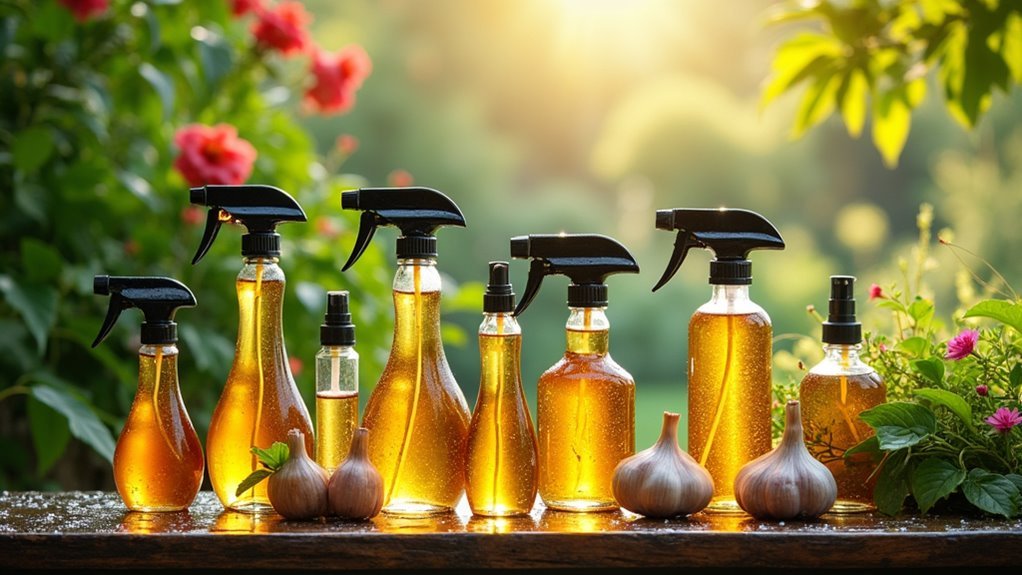
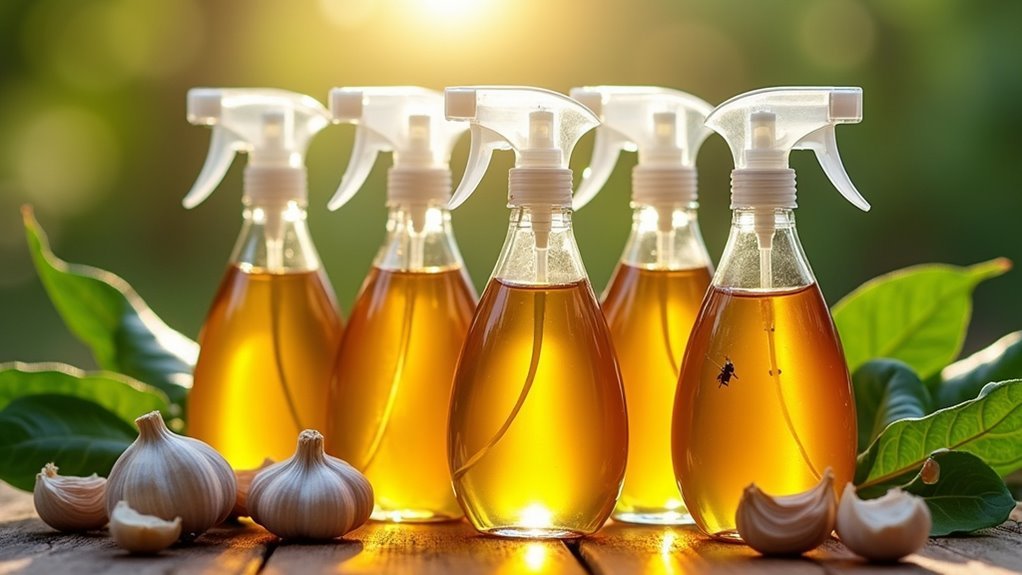

Leave a Reply